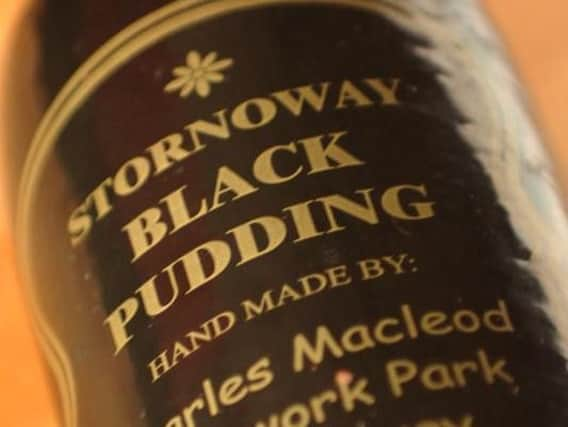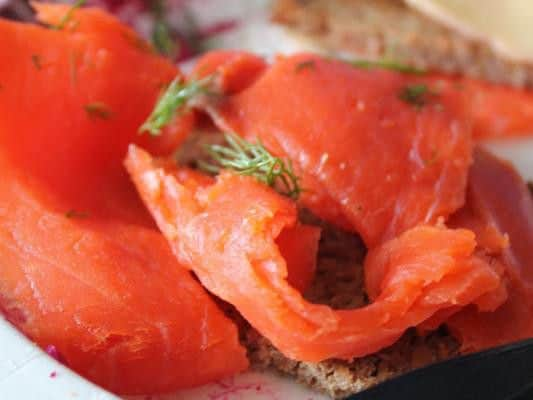Scotland's famous brand names face fight for protection after Brexit


Imagine, then, that you have spent years building up a blue-chip reputation through both advertising and the quality of your product only to have it unceremoniously stripped away from you. That’s the scenario facing many Scottish food and drink producers if a no-deal Brexit comes to pass.
This country’s food and drink sector has enjoyed something of a golden age in recent years after a long period of stasis. It is Scotland’s largest employer and, over the last decade, food exports have doubled. Sales of Scottish brands in the UK alone have risen over 40 per cent and the industry is now worth £14 billion.


Advertisement
Hide AdAdvertisement
Hide AdCurrently, 15 of Scotland’s premium brands – including Scotch beef, lamb and whisky, Arbroath Smokies and Stornoway black pudding – enjoy Protected Geographical Indication (PGI) status under the EU scheme which guarantees no trademark interference with the name of an area, place or country used in the description of a foodstuff or agricultural product.
While there are 84 PGI-trademarked names of foodstuffs spread throughout the UK – from Cumberland sausages to Kentish Ale and Stilton blue cheese – Scotland utilises its unique PGI branding more than any other part of Britain.
At the moment, the 15 Scottish PGI-protected brands account for more than £1bn in exports, and a no-deal Brexit carries the very real threat that this income will be eaten away by rival brands and imitators looking to cash in on Scotland’s reputation for quality produce.The Scottish Government’s Brexit minister, Mike Russell, has long sounded the alarm on the danger the threatened lack of PGI status poses to the country’s manufacturers – and to jobs – arguing that there should be “a special place for Scottish PGIs” in any new trade deal negotiated with the EU.
“Indeed, we should be developing our own plans for such a system, and ones that integrate well with the continuing European process,” Russell maintains.Scotland has some of the largest protected food names in the EU, with high-value products such as Scotch Beef PGI and Scottish Farmed Salmon PGI, accounting for about £700 million in sales.
“For every consumer in China or America that has heard, even a little, about our politics and our current culture, there will be tens of thousands who know about Scotch whisky and hundreds who recognise Scotch beef or Scottish salmon as high-quality must-haves for a special occasion,” asserts Russell.
“Protected Geographical Indicators not only guard us against cheap imitations but they also serve as great ambassadors for this beautiful but small country,” adds Russell. “They help people to get to know us and they build a brand loyalty which is – and will remain – of great benefit to us.”
Currently Forfar bridies, Ayrshire early new potatoes and Dundee Cake are all in various stages of consideration for PGI status.
The good news is that Scotland’s 15 PGIs will continue to be protected – in the UK at least – but it is not at all clear whether they will also continue to be protected elsewhere. In the worst case “no-deal” scenario, it is thought that fresh applications to Brussels would have to be submitted. The logo for products protected by geographical indicators will also have to be replaced by an EU one – a minor detail to be sure but perhaps significant for consumers who can often be resistant to change.
Advertisement
Hide AdAdvertisement
Hide AdFurthermore, the transition period for this new UK requirement only stretches up until 2022, at which point there would have to be a fresh round of negotiations.
Scottish exporters will also face a fresh round of challenges in order to plan ahead for production, packaging and sales if they want to continue to sell their goods in the EU. One basic, but essential question is simply this – what address to put on the label of a food product?
At the moment, if you want to legally sell foodstuffs in the EU you are required to put the name and address of a “food business operator” on the packaging. Right now, that issue is solved by putting a UK address, but after 31 October...?
In the event of a no-deal Brexit, UK businesses will still have to comply with this statutory requirement to provide an EU address – a UK one now being outwith the single market. If British producers already have an established EU subsidiary or distributor it may simply be a case of using their address.
If businesses do not use one merchandiser, then the current UK government advice is to consider switching to a single distribution hub or importer. This could well be problematic and expensive. Different addresses for different importers – which could well be a newly incorporated subsidiary in any EU state – is the simplest way to ensure compliance with regulations, but it may not be an ideal situation when reinforcing provenance or brand identity.
There’s also a further complication when it comes to the issue of mandatory food information, which varies from each EU member state. For example, in Scotland currently, failure to provide a mandatory name and address can incur a fine of £5,000.
In England and Wales, however, improvement notices are issued requiring the label to be changed and it is an offence to not comply with these notices. Each EU member state has its own rules and enforcements, which potentially means that the enforcement of individual customs security and enforcement authorities across Europe cannot be 100 per cent guaranteed.
In addition – as if all this were not already quite enough to be getting on with – some producers of meat, fish and dairy have expressed concerns about the additional cost arising from the need to change the health/indication labels required by EU laws. The current oval shape and approval number will remain unaffected but the use of “EU” will – as you might reasonably expect – have to be changed to “UK”.
Advertisement
Hide AdAdvertisement
Hide AdHowever, unlike PGI produce, there is to be no transition period. You will not be able to use any packaging with “UK” on it prior to Brexit and there is to be no phasing in of the change.While Brexit, particularly a no-deal one, poses many a challenge to exporters, it is conceivable that the loss of PGI status produce could be among the most serious. “We should start to make clear all the things that are at stake,” says Mike Russell. “There are lots of them but our special brand is definitely one of the most visible.”
